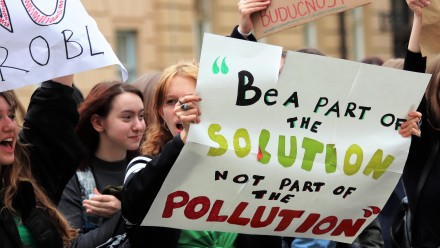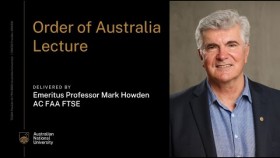What's driving youth participation in the school climate strikes?
In September 2019, hundreds of thousands of school students and their families rallied across Australia, kicking off a day of protest that brought together millions around the world. Whilst youth rebellion has a long history, the School Strike 4 Climate (SS4C) has become one of the largest protest events ever held in Australia. So what’s behind this enormous mobilisation?
Hannah Feldman is fascinated by the convergence of factors that are driving the movement.
“The way that youth have led this protest is completely different from anything we’ve seen before,” she said. “This represents the intersection of a unique set of social and psychological factors. Teens have a lot of power in many ways – they have jobs, bodily autonomy and they can drive. But this power collapses when we get to politics and their ability to influence society’s response to issues such as climate change.”
“This case study of young people taking to the streets is very hopeful. It’s very pro-science and it also signals a refreshing change in the way that individuals think about big problems. 16-17 year-olds obviously can’t vote but they are making themselves heard in a way that can’t be ignored.”
Hannah is doing a PhD with the Australian Centre for the Public Awareness of Science exploring what’s motivating the School Strikes 4 Climate. With a background in astronomy and science communication, she initially resisted focusing on climate change for her PhD because she said she felt that discussion on the subject was so pervasive.
But the more she explored the issues, the more she realized that the strikes were a perfect case study to help understand the intersections between science, politics and youth.
“Climate change is an issue that is massively relevant to youth – arguably it represents the greatest challenge facing this generation” she said. “But at the same time, it also appears to be serving as a proxy for political dissent and the desire for greater autonomy. The protest literature highlights that what’s also important is the sense of belonging that participation provides.”
As the movement has matured, it has grown rapidly and the goals of the strikers have evolved. As well as demanding an end to fossil fuels, they’re now calling for a just transition. Whilst it’s likely these demands will become increasingly sophisticated, only time will tell what the legacy of the movement will be.
“School Strike 4 Climate has enabled millions of people around the world to band together on an issue that they care deeply about. Perhaps the biggest outcome of the movement will be the development of a new mechanism for being heard and making a difference, enabling the next generation of citizens.”
Hannah is about to start fieldwork in schools and expects that the findings of her research will have practical value for policymakers and educators.
“The way these young people are communicating about issues will shape our future. The research will be useful for anyone who’s interested in engaging young people across a range of fields.”











